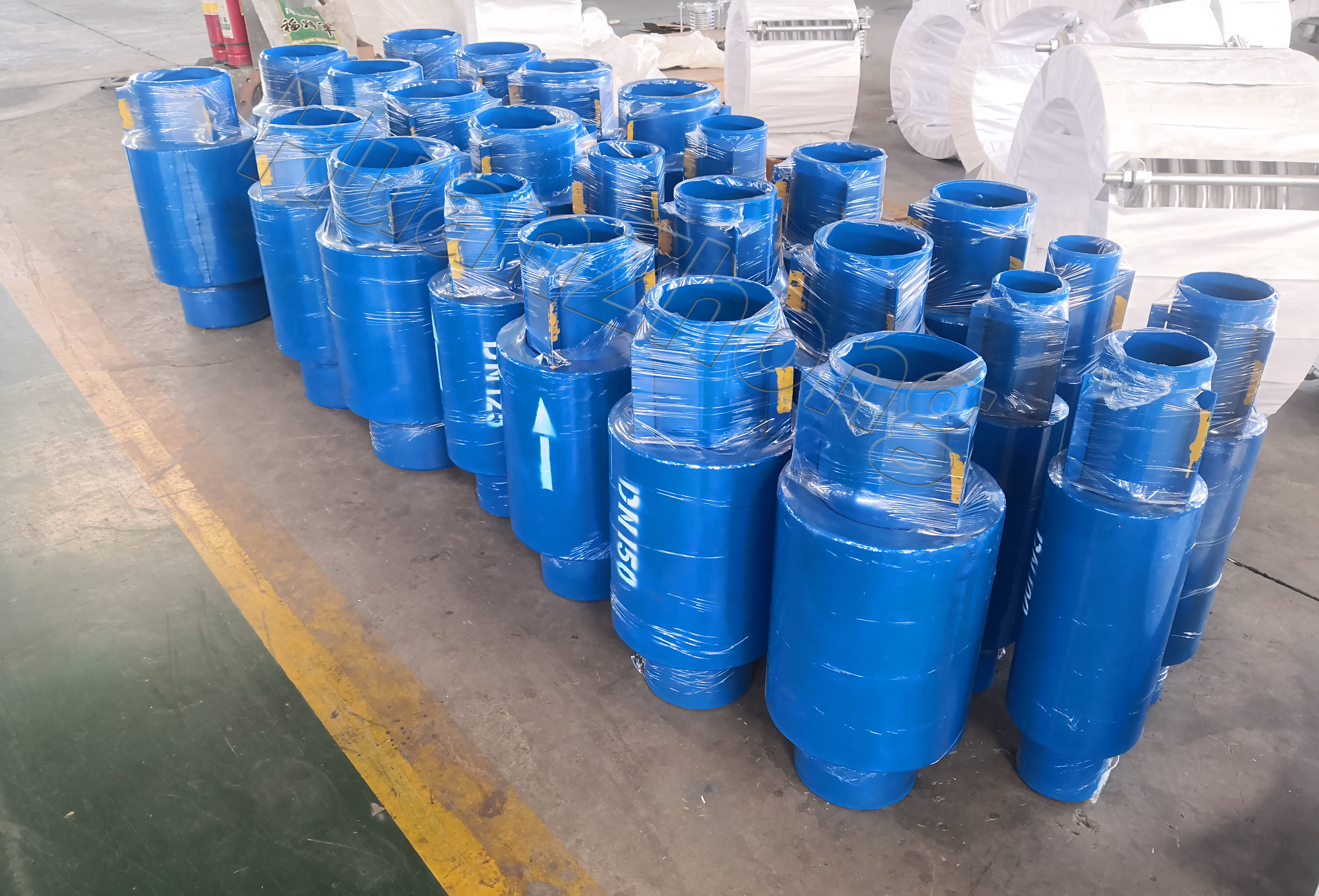Concept of Axial Internal Pressure Compound Compensator and Its Advantages.
Concept of Axial Internal Pressure Compound Compensator and Its Advantages.
The axial internal pressure compound compensator is a specialized component used in piping systems and vessels to handle situations where the pressure inside the system is higher than the ambient pressure outside. This compensator is designed to absorb the differential pressure and thermal expansions in the axial direction, reducing stress on the system. In this article, we will discuss the concept of the axial internal pressure compound compensator and its advantages.
The axial internal pressure compound compensator consists of multiple bellows layers stacked one on top of the other, with intermediate pipes or liners. This design allows for greater flexibility and displacement capability in the axial direction, while also providing stability and resistance to axial thrust. The compensator is typically installed in a straight section of a piping system or vessel to accommodate the expansion and contraction caused by temperature changes and pressure differentials.
One of the primary advantages of the axial internal pressure compound compensator is its ability to absorb large axial movements. It allows for significant expansions and contractions in the axial direction without transmitting excessive stress and loads to the piping system or vessel. This helps to minimize the risk of pipe or structural failures due to thermal growth or pressure variations.
Another advantage of the axial internal pressure compound compensator is its ability to handle high-pressure differentials. The stacked bellows design provides the compensator with a higher "spring rate", allowing it to handle higher pressures compared to other compensator types. This makes it suitable for applications where there are significant pressure differences between the internal and external environments.
The design of the axial internal pressure compound compensator also allows for easy installation and maintenance. It can be easily installed in straight sections of the piping system, thereby minimizing the need for complex piping configurations or additional supports. The compact design and minimal space requirement make it a practical choice for tight installations.
Additionally, the axial internal pressure compound compensator is highly efficient in providing effective stress relief and load distribution. Its design distributes the axial forces evenly across the bellows layers, preventing localized stress concentrations that could lead to premature failure. This distributes the stress along the entire length of the compensator, resulting in a more balanced load transmission and improved system performance.
Furthermore, the axial internal pressure compound compensator offers good resistance to corrosion and high-temperature applications. Bellows materials such as stainless steel, Inconel, or Hastelloy are commonly used, providing excellent resistance to heat and corrosion. This ensures that the compensator can withstand the high temperatures and corrosive environments in which it may be installed, increasing its durability and longevity.
In conclusion, the axial internal pressure compound compensator is a specialized component that offers several advantages in handling axial movements and high-pressure differentials in piping systems and vessels. Its ability to absorb large axial movements, handle high-pressure differentials, ease of installation and maintenance, efficient stress relief, and resistance to corrosion and high temperatures make it a preferred choice in various industrial applications. Selecting the appropriate axial internal pressure compound compensator ensures the safe and reliable operation of the system, reducing the risk of failure and improving overall performance.
